 4 Columns
4 Columns
Let there be light . . . and darkness! Our editors have pilgrimaged through the archives to illuminate recommendations revealing purity and perversity to be but two sides of the same coin.
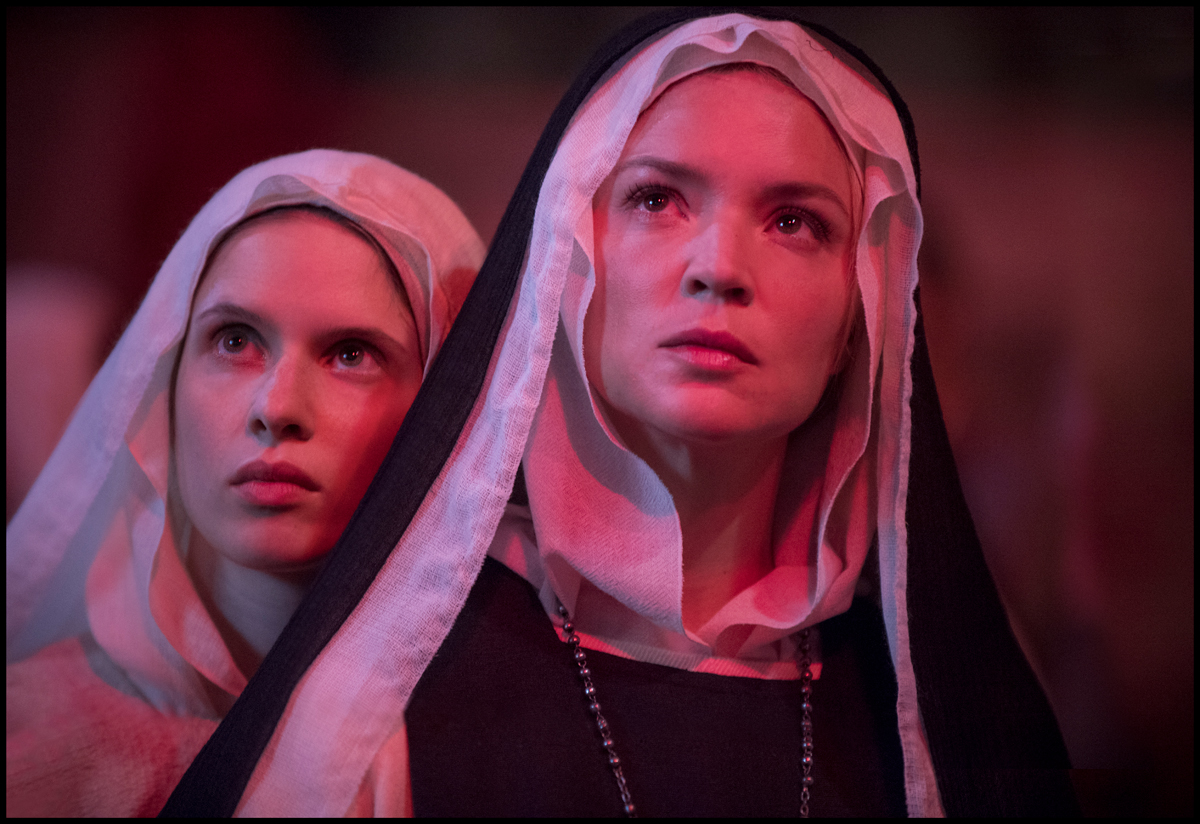
Daphne Patakia as Bartolomea and Virginie Efira as Benedetta in Benedetta. Courtesy IFC Films.
Sparkles of the divine glitter throughout the 4Columns archives, in the words of mystics, in the pictures painted by true believers, in the stories of their devotion. But those shards of the sacred don’t glister alone in ethereal clarity—they are found plunged in the muddiness of earthly existence, in the heaviness of corporeality, in the muck of the wicked. In this week’s summer missive, sifting through profane cultural criticism for nuggets of the holy, we are blinded by the light even as we kneel in the pleasurable darkness, finding that you can’t separate the one from the other.
• • •
OMAR BERRADA ON THE POETRY OF IBN ‘ARABI
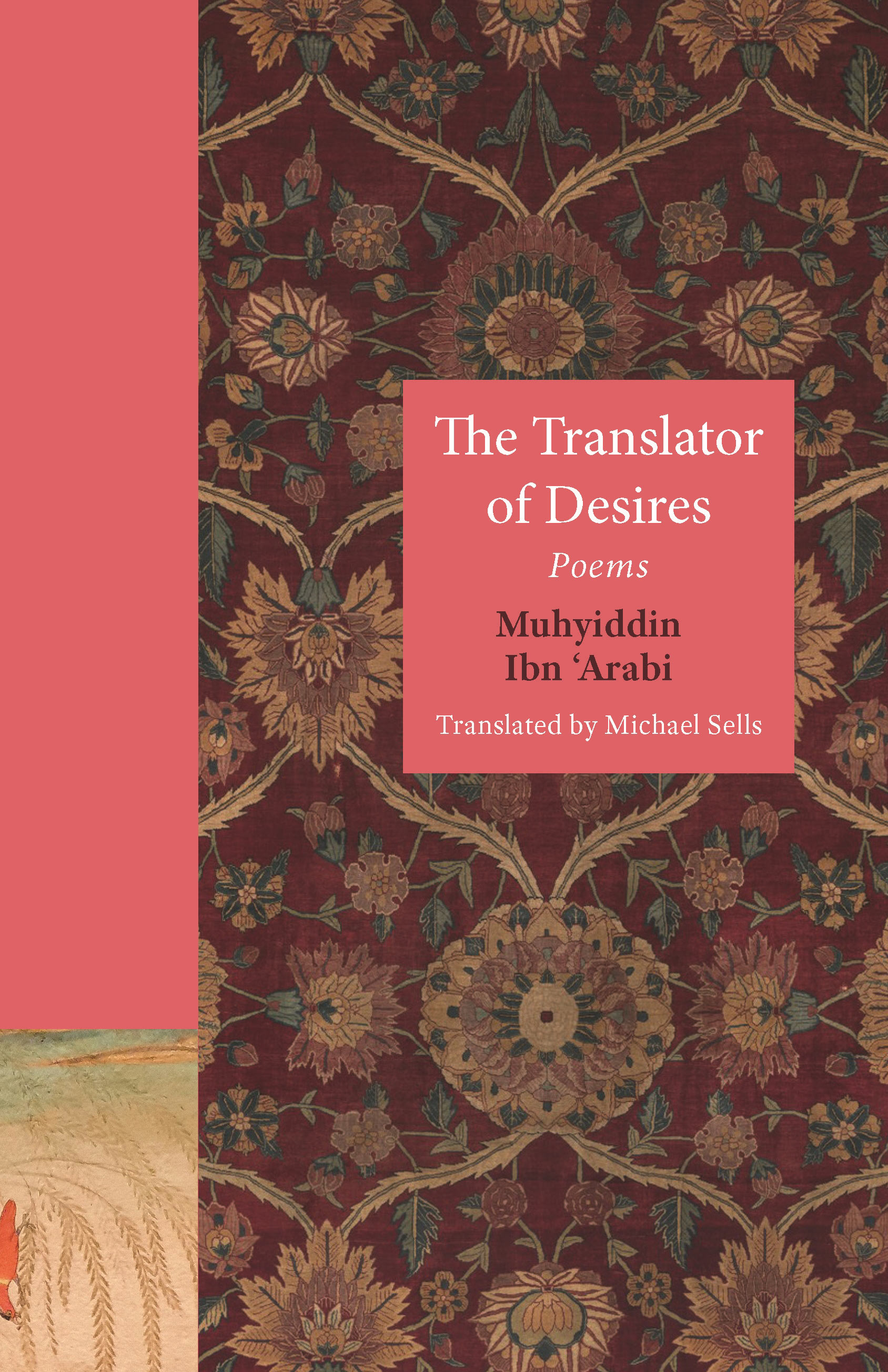
Ibn ‘Arabi (1165–1240) was long understood as a drily analytical philosopher and theologian of Islamic thought. But as Omar Berrada explains in his review of Michael Sells’s English rendering of his The Translator of Desires, the man was also the author of gorgeous poetry that provocatively, even notoriously, captured the erotic experience of divine communion. This collection “sprang from Ibn ‘Arabi’s encounter with a young woman named Nizam who, he insists, was more than a muse,” Berrada writes. “Nizam represented not only poetic inspiration, but spiritual aspiration. To engage with her was to come closer to the divine. After all, Ibn ‘Arabi met her while circumambulating the Ka‘ba. To him, she is God’s transcendence made immanent. . . . To achieve union with the divine beloved is to polish the mirror of one’s own heart, to seek the annihilation of one’s ego. The poems sketch a zone of experience marked by a porousness between outer events and inner perception. ‘Lightning flashed / in Abraqáyn / Thunder roared / within our ribs.’ The heart is a sensor. Its expansive community of feeling includes plants and animals.”
• • •
YASMINE SEALE ON THE POETRY OF RUMI
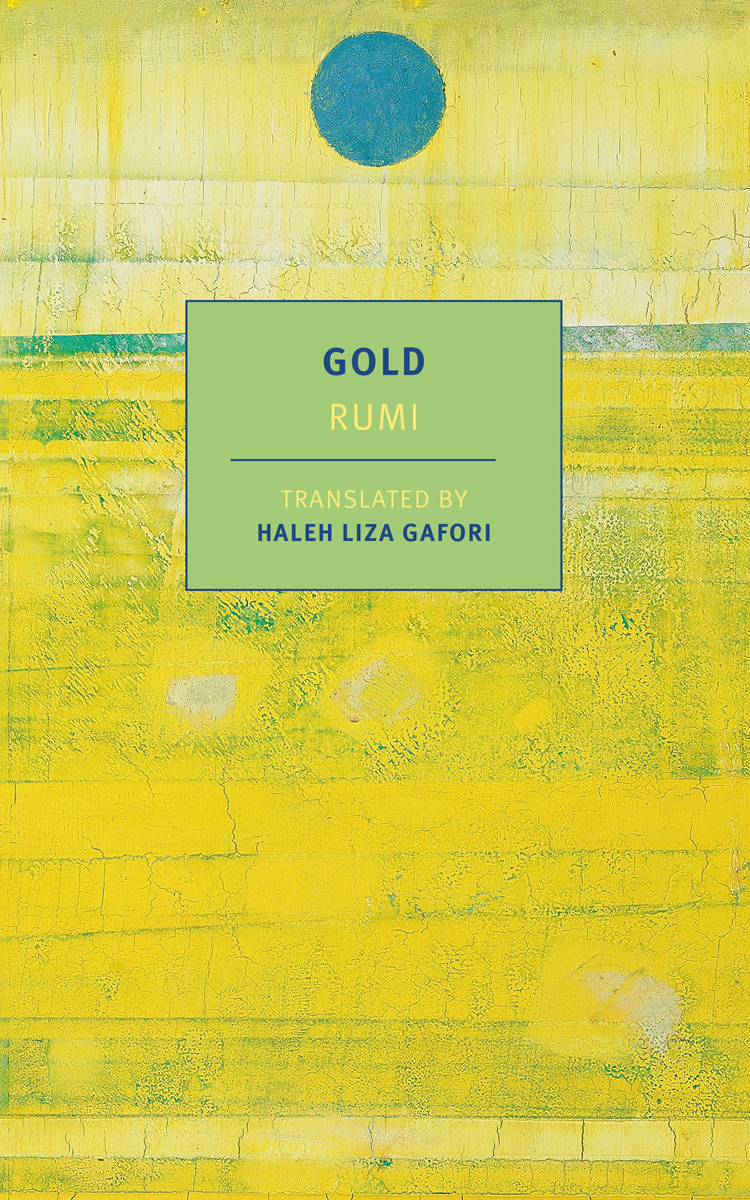
Coming historically on the heels of Ibn ‘Arabi’s sensuous poems of mysticism was Rumi (1207–1273), who of all the mystic poets perhaps best understood how fleshy the divine could be. In her review of Haleh Liza Gafori’s new English translation of a selection of Rumi’s poetry, Yasmine Seale describes how “Rumi envisioned scripture as a rich fabric woven on two sides: ‘Some enjoy the one side, some the other. Both are true.’ His poems, like velvet, are shimmering or rough depending on your view; they speak of both heaven and earth. Mystical ideas are wrapped in the stock images of Persian love poetry—eyelashes, cupbearers, nightingales. Objects of everyday life become channels to the divine. A sixteenth-century miniature depicts dogs in a market listening to Rumi; his teachings, however abstract, feed on the boisterous, edible world. The unity of creation, a constant theme, is like ‘one oil in countless almonds.’ Transcendence begins here and now; it smells of basil, of tripe.”
• • •
ANIA SZREMSKI ON OLGA TOKARCZUK’S NOVEL
THE BOOKS OF JACOB
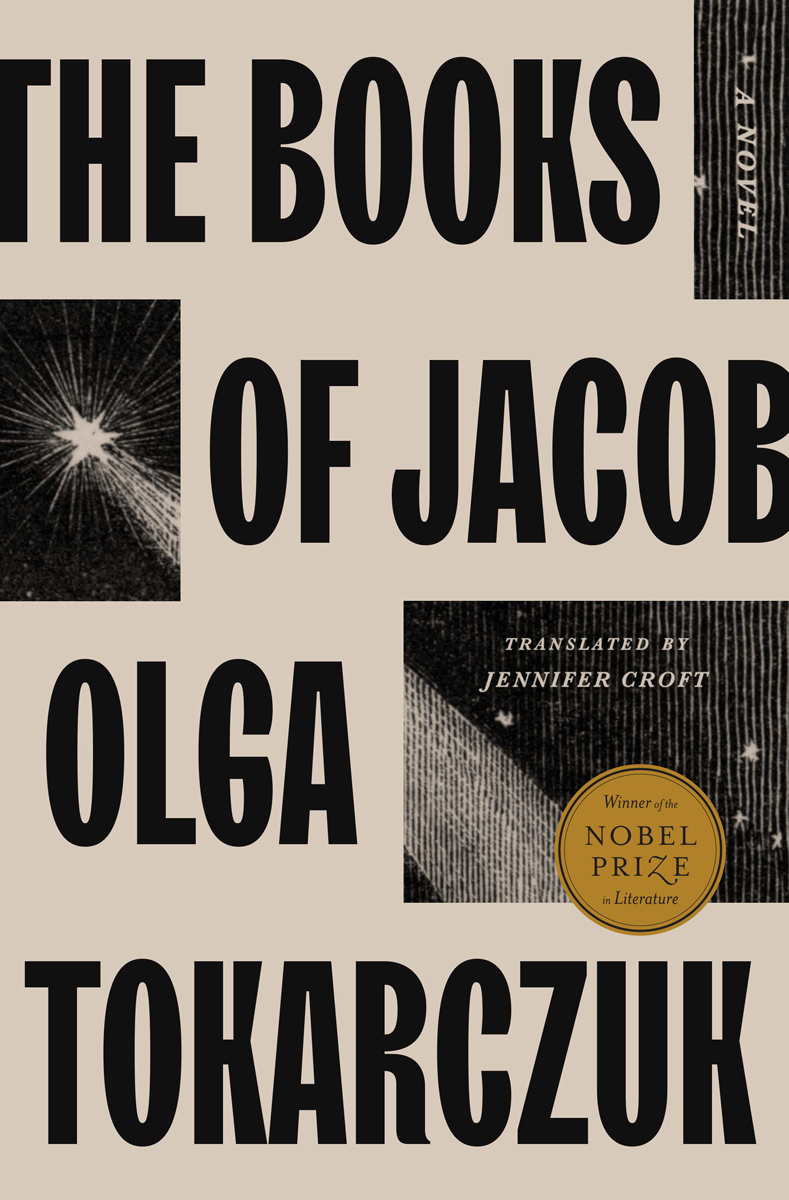
Nobel Prize–winning author Olga Tokarczuk’s latest, translated from Polish by Jennifer Croft, is the thousand-page The Books of Jacob, “a fictionalized account of a real man, Jakub Leybowicz, alias Jacob Frank, around whom was built an occultist sect of Judaism,” writes reviewer Ania Szremski for 4Columns. The novel “follows the charismatic leader and his flock, their enemies and benefactors, and sundry other characters in their orbit as they rove through a politically and culturally shapeshifting Central-East Europe in search of salvation during the apocalyptic second half of the eighteenth century. The Frankists, a polyglottal lot from the territories that are now Poland, Romania, Hungary, Turkey, and the surrounds, follow their Messiah through his brief conversion to Islam and then more emphatic conversion to Catholicism, which leads to the mass baptism of thousands of Jews in Poland.” But in Tokarczuk’s telling, Frank was a man as profane as he was messianic, indulging in all sorts of pleasures of the flesh, including, possibly, with his own daughter . . .
• • •
HANNAH BLACK ON THE PAINTINGS OF JOSEPH YOAKUM
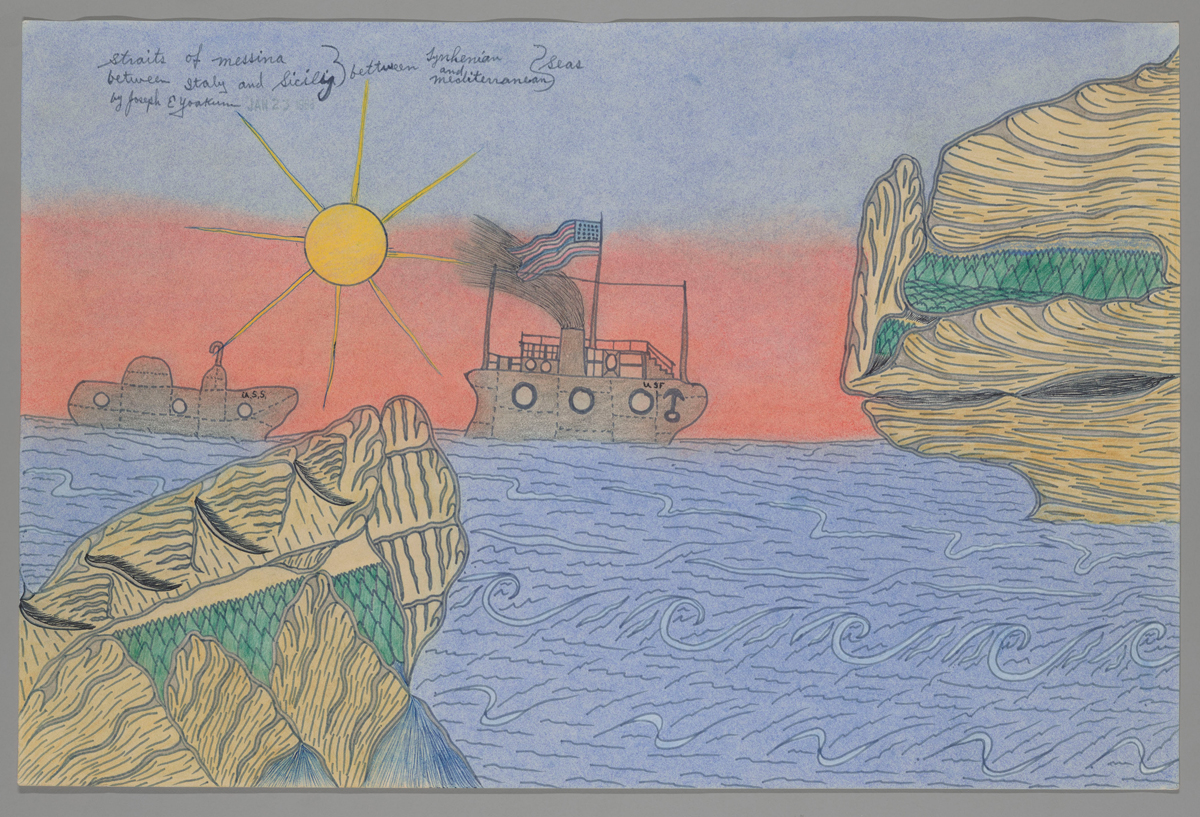
Joseph E. Yoakum, Straits of Messina between Italy and Sicily between Tynhenian and Mediterranean Seas, stamped 1968. Gray felt-tip pen, black fountain pen, blue ballpoint pen, pastel, and colored pencil on paper, 11 13/16 × 17 15/16 inches. Courtesy Art Institute of Chicago.
We turn now from sacred words to sacred images: the paintings of Joseph Yoakum in particular, which were the subject of a recent retrospective at the Museum of Modern Art. As reviewer Hannah Black explains, Yoakum’s practice “originated in a dream he had in 1962 and resembles the saturated geography of dreams, in which the mind sutures itself together by making a habitat for itself. He was already in his seventies when God appeared to him while he was sleeping and commanded him to draw. Growing old in a storefront studio on Chicago’s South Side . . . Yoakum reconstructed the peregrinations of his youth in ballpoint pen and colored pencil. From an early age he had traveled with the circus and the army, systems of entertainment and war, catapulted around the globe by labor and the annihilation of labor. Becalmed in Chicago, he lent new substance to the traces of experience. Across thousands of drawings, a world made consistent by his vision of it took shape.”
• • •
MELISSA ANDERSON ON PAUL VERHOEVEN’S FILM BENEDETTA
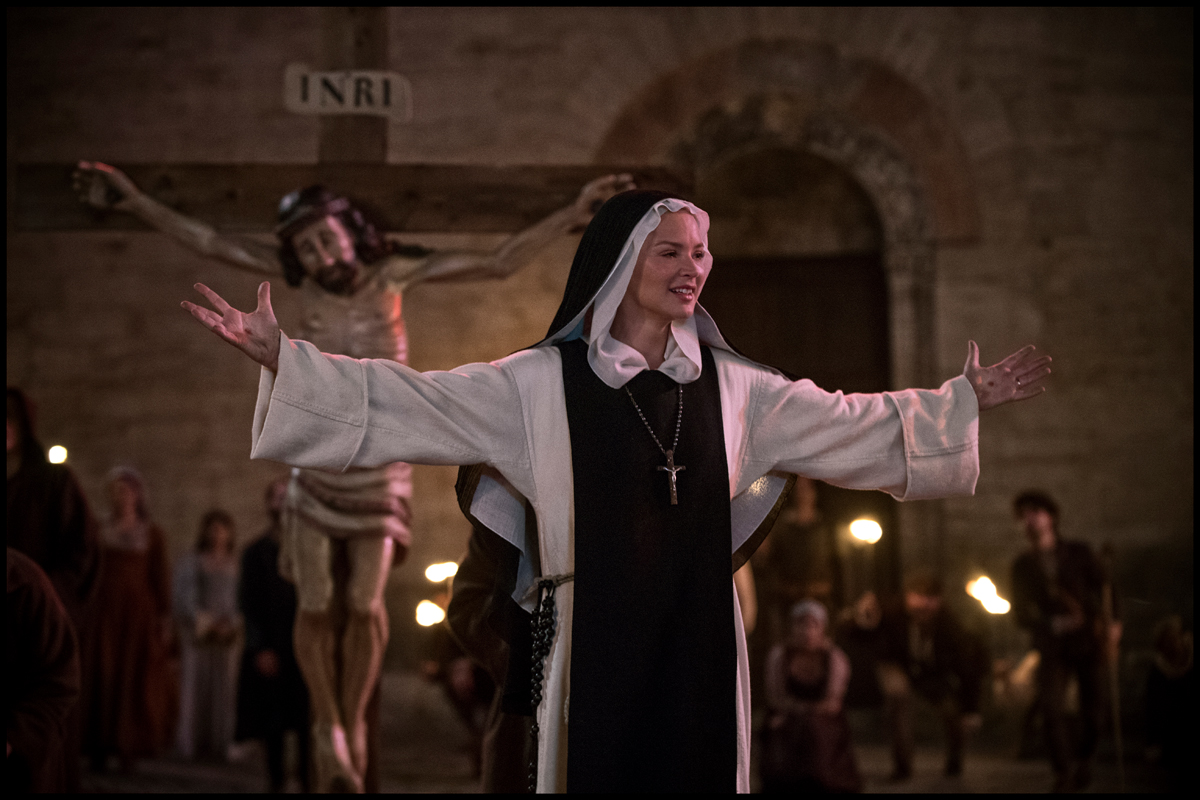
Virginie Efira as Benedetta in Benedetta. Courtesy IFC Films.
And we end with 4Columns film editor Melissa Anderson’s review of the most profane of the sacred entries in this reading list: famously shocking director Paul Verhoeven’s lesbian-nun film Benedetta, which “abounds with the outlandish: mystic visions, CGI snakes, demonic voices, plague deaths, aborted auto-da-fé, Charlotte Rampling in a wimple.” Its bizarreries include a procession of self-flagellators and “the graphic depiction of flesh ravaged by buboes,” in addition to “hot lez action” and blasphemies that include “a wooden figurine of the Virgin Mary lovingly whittled into a dildo”—a symbolic encounter with the divine so literally libidinal that sacred and profane are inextricably interpenetrated.